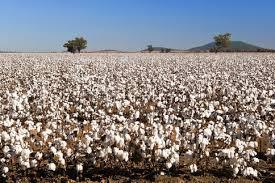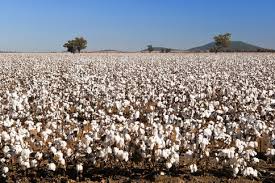
One of India’s largest export is in fact water in the form of raw materials exports ranging from automobiles to cotton. The irony of the situation is such that in 2013, the water consumption to grow India’s cotton exports would be sufficient to supply 85% of its 1.24 billion populace with 100 litres of water every day, for an entire year, whereas more than 100 million people in India are want of access to safe water.
Cotton is not India’s only export that consumes such humongous quantities of water - jewelries, gems and petroleum products closely follow behind. All of these exports require staggering amounts of water. This water that is largely unseen but used in huge quantities to produce exports, such as furniture, books, electronic goods, toys, buildings, cars, electricity, etc is called Virtual Water. Because of its very nature, virtual water, tends to be taken for granted, and people tend to forget that it is in fact very real, as real as the water they drink.
Cotton is not India’s only export that consumes such humongous quantities of water - jewelries, gems and petroleum products closely follow behind. All of these exports require staggering amounts of water. This water that is largely unseen but used in huge quantities to produce exports, such as furniture, books, electronic goods, toys, buildings, cars, electricity, etc is called Virtual Water. Because of its very nature, virtual water, tends to be taken for granted, and people tend to forget that it is in fact very real, as real as the water they drink.
As per a research report produced by Water Footprint Network, 22,500 litres of water is used to produce 1 Kg of cotton in India. In other words, this amount of water cannot be used for any other purpose because it is either too contaminated for reuse of a significant portion of it has evaporated.
In 2013 alone, 7.5 millions bales of cotton has been exported by India, thereby consuming around 38 billion cubic meters of virtual water. This humongous quantity of water has been used only to produce cotton and for no other purposes. It could have met the daily needs of 85% of the populace.
What is of note is that to produce 1 Kg of cotton does not normally consume 22,500 litres of water. The global average water footprint for 1Kg of cotton is 10,000 litres. In the US, irrigated cotton uses around 8,000 litres per kg. The Indian usage is higher because of inefficient usage of water as well as occurrences of higher incidents of water pollution.
Much of Indian’s cotton is grown in regions which are dry, and since the Government heavily subsidizes costs for the farmer, and places no limits for the volume of ground water that can be utilized, or at does so at insignificant costs, this has resulted in patterns of widespread use of ground water as well as straining the electrical grid which runs electric pumps that extract this ground water.
Recent studies have indicated that water consumption is way off the mark. 40 to 80% of the available surface water, is used by 54% of the country. As per experts in this subject, to ensure a sustainable supply of water, its consumption pattern should be less than 20% in humid zones and 5% in dry areas.
With its current usage pattern, India’s extensive groundwater resources have rapidly been depleted with 58% wells in north-west India, being reportedly dry. As per the World Resource Institute, if the same pattern continues, the demand for ground water will outstrip supply by more than 50%
“India’s water problems are well-known in the country and pollution is everywhere. Disagreement lies in the solutions,” says Arjen Hoekstra, professor of water management from the University of Twente, Netherlands.
The Indian Government Solution to this problem is the National River Linking Project, wherein 30 rivers will be interlinked with 15,000kms of canals, thereby transferring 137 billion cubic meters of water annually from wetter regions to drier ones. However, given its current export of virtual water, this will still not be enough, unless the usage of water is optimized.
“It’s not just improving water efficiency that could dramatically reduce India’s water consumption, it’s growing and producing things in the right place. There’s a lot of concern about water scarcity, but little interest in changing consumption patterns.” says Arjen Hoekstra.
On a more positive note, there is a growing awareness and interest in this area, and the industry led efforts in Better Cotton Initiative, is likely to reduce cotton’s water footprint. Further, growing cotton organically also reduces water consumption, since it utilizes no chemicals. India is gradually producing more and more cotton organically and currently it produces two thirds of the world’s organic cotton.
References:
http://www.theguardian.com/sustainable-business/2015/mar/20/cost-cotton-water-challenged-india-world-water-day





